Many of you fit this category. A baby boomer (as many of you know) is someone born between 1946 and 1964. We have all heard about the aging of the workforce and the impending arrival of the baby boomers into the age of retirement. This began officially in 2011, when the first of the baby boomers hit 65 years of age. It will continue for another twenty or so years until the baby busters (all of us born 1965 and after) begin to retire, at which point the average age of the workforce will again decline.
Here is where I love to look at statistics and trends and such to see really what’s going on. For example, did you know that the baby boom of 1946 and on is actually a lower birthrate than was present in the US during the 1910-1920 years? But I digress.
Regardless of the causes, the aging of the workforce is a reality and certainly is no surprise for those of you who are in the middle of that category. It means a higher percentage of those working are going to be 45-65 years of age compared to those under 45.
What does that really mean, though? Being an older worker you certainly are familiar with the effects it has on your working abilities. Your back may hurt. You may have begun to develop arthritis. You may have started to slow down, not so much able to do a lot the same things (especially physical work) at the same speed as younger workers. Unfortunately, these are not things that are going to change – they’re going to continue.
The good side of the coin is that there are certainly benefits to being in this category of worker. You certainly know how to work smarter. Many tasks you would have muscled through or kept going on in even when you shouldn’t have are now tasks that you do in different ways, often more efficiently than a younger person. You know the importance of taking a break. Thinking on how a task might be done better is something you now do ahead of time, not afterwards! I think most of us remember some of those days.
So. These are all things you probably know. You’ve seen it or experienced it. You haven’t had much of a choice in the matter, probably. However, whether you’re on the brink of these changes, right in the middle of them, or well into them, there are probably still things you can do to work better and safer. These may be simple things and certainly not an exclusive list, but a good reminder never hurts.
- Take a break! You will work much more efficiently (and longer) on a task if you take breaks.
- Pay attention to how you complete a task. Think ahead of how it could go to ensure a better way of doing it.
- Use tools if you can!
- Pay attention to your work station. Things that cause repetitive motion, uncomfortable postures, and overreaching all can impact you in a negative way.
- Wear good footwear!
Doing some of these and others can help you not only avoid future injury or increased wear and tear on the ‘ol body, it can help you if you already have some physical limitations or disabilities.
If you’re an employer, and whether or not you have disabled or older workers on your staff,, pay attention to some of these things – they might help reduce your insurance costs!
- Educate and involve employees.
- Encourage early reporting of problems.
- Find quick fixes to get momentum going.
- Some problems are more complex than others.
- Focus on effective solutions.
- Don’t just throw money and equipment at the problem.
- Make ergonomics part of purchasing and planning.
- Expect results, but be patient.
These and others can be found at:
10 Tips for Effective Ergonomics
Bottom line is this: Whether or not you are older or younger, disabled or not, working smarter will only help you over time. We want to help you do that. Please remember our mission statement and never hesitate to contact us if we can help!
The mission of DisabilityWorkTools.com is to make adaptive tools readily available so people can independently work on the job and around the home in spite of injury, aging or disabling condition. We motivate productivity by distributing tools that enhance activity, minimize physical pain and deliver hope to hurting individuals. We enable people to select the best tools for the job so they can perform to their full potential.
